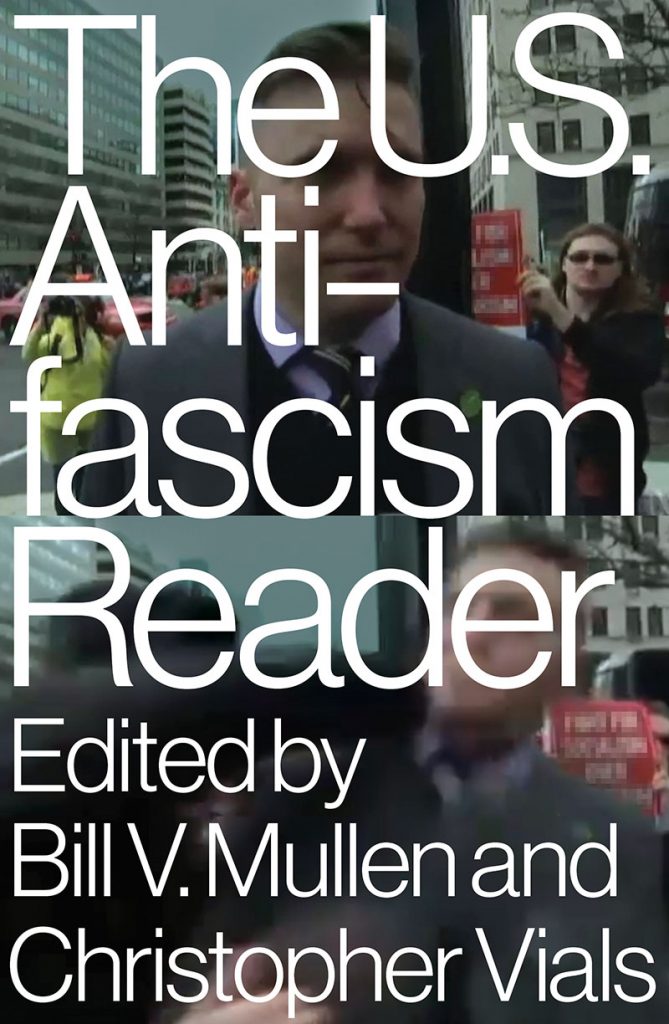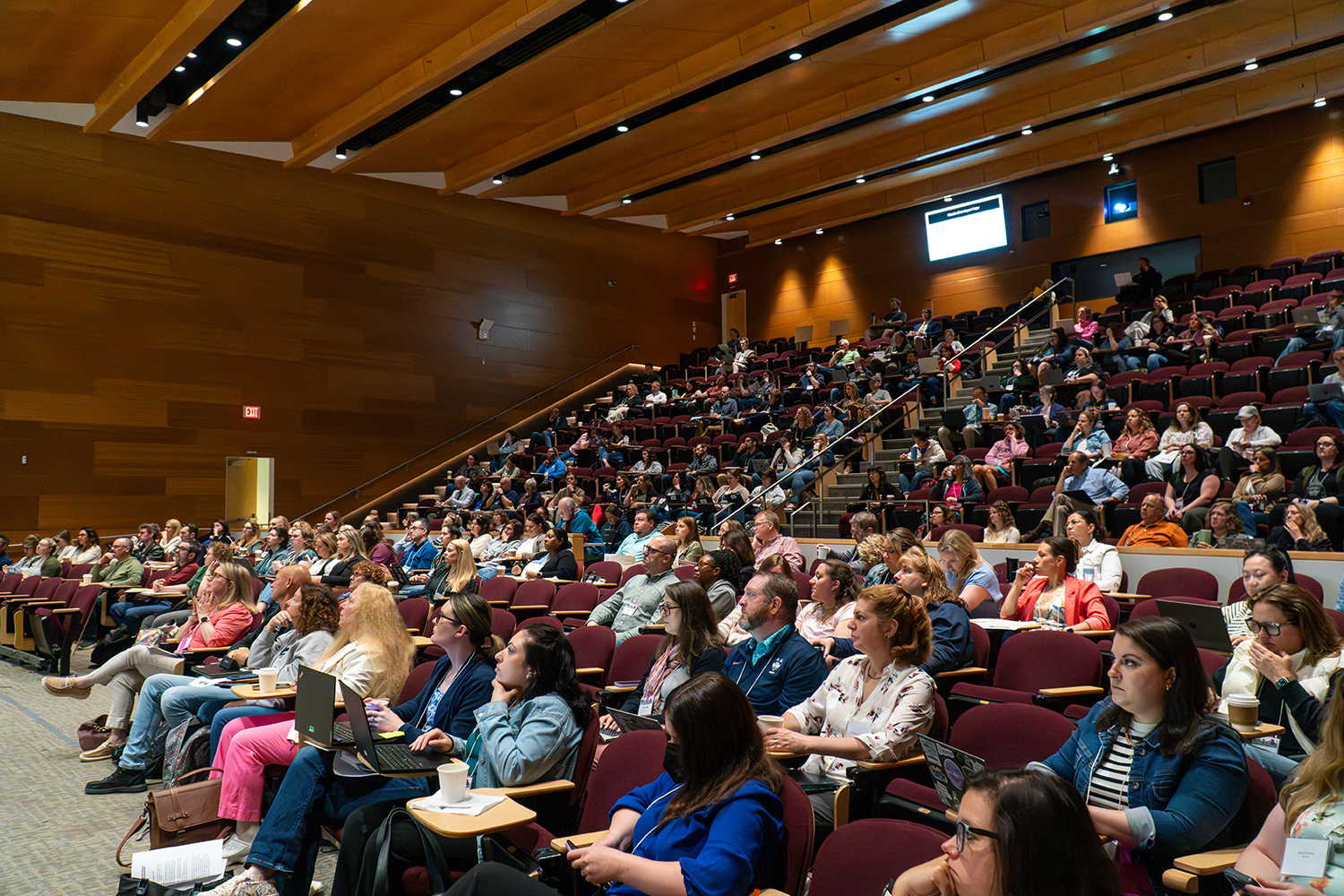Christopher Vials is an associate professor of English and director of American Studies whose broad research interests include class and racial formation, popular culture, ethnic studies, social movements (left and right), and working class cultural studies. Since 2012, much of his work has been on antifascism and American fascist movements. His second monograph, titled “Haunted by Hitler: Liberals, the Left, and the Fight against Fascism in the United States” (Massachusetts, 2014), traces the history of antifascist politics in the United States since the 1930s. He has appeared on PBS, NPR, and CBC radio to discuss manifestations of fascism in the United States. He is the co-editor, with Bill Mullen of Purdue University, of a new anthology called “The U.S. Antifascism Reader” (Verso Press 2020). He spoke with UConn Today about the new book.
Q: The subject of fascism is something that you’ve been interested in for a long time. What brought you to that?
I had done a lot of work on the 1930s and 40s and saw this subject of fascism and the word fascism beginning to lose its meaning. You had people on the right, particularly Jonah Goldberg who put out this book called “Liberal Fascism,” who were basically saying that anyone who uses government power for anything is a fascist. I knew from the book [“Haunted by Hitler”] and the conclusions of the book that we have had the functional equivalent of fascist movements throughout American history, and those movements have done a lot of damage to democracy, even though they haven’t taken full state power. The stakes of the issue have been real in the U.S., but what I didn’t expect was that they would become so very real, so quickly. In fact part of the conclusions of my book, “Haunted by Hitler,” was a little bit premature in the sense that I knew we had fascist movements and mobilizations and things like this, but I never thought we’d have a president who would really inhabit fascist rhetoric. But with Trump you really do have a different animal, because you have actual Nazis on both sides of the Atlantic, and Klan folk and the white nationalists actively excited about the election of this guy.
Q: Your current book is an anthology, and anthologies are great because there’s so much information. What’s the challenge in trying to bring all of this information together?
Figuring out what’s most important when there’s so many important things that have been said since the 1920s in the United States on this subject. The compilation is really mostly nonacademic writing; it’s people who are in movement cultures and who are trying to stop fascism in various ways. It also includes some writers who weren’t Americans but who were influential in the United States. We’ve never had a fascist state in the United States, including now, but we have had fascist movements that have been quite vast. The movements that we name and we trace in “The U.S. Antifascism Reader” are similar to the ones in “Haunted by Hitler”: the Ku Klux Klan in the 1920s, which was a mass movement; Father [Charles] Coughlin’s Christian Front in the 1930s was also an anti-Semitic mass movement; some of the anti-civil rights ferment in the fifties and sixties that culminates with George Wallace heavily influenced American politics; elements of the Christian Right, and finally, elements of the Trump base today.
Q: This appears to happen almost on a regular basis. To what do you attribute that?
Fascist movements are a little bit more difficult to name in the United States. In Europe you’ve got multi-party systems. In Germany, for example, different elements of the right can form themselves into different political parties with different ideologies and platforms, like libertarian, traditional conservative, and proto-fascist. So fascism is easier to see there. In the United States, we have the two-party system and it’s harder to parse apart because the entire right wing is in a big coalition under the Republican Party. But to be clear, we have fascist mobilizations in the United States because we have a long history of race and racial violence that provides the ground out of which fascist movements can grow –a history of settler colonialism, “Indian removal,” frontier warfare, slavery, Jim Crow. I’m not saying American history is reducible to all those things, but if you have that history these movements can grow.
Q: Let’s talk about how the recurrence of antifascism in the U.S. is articulated, because it comes back time and again in various essays in the anthology.
That antifascism is a left-wing phenomenon was something that was well known in Europe and has become much more well-known here in the United States in recent years. And look, I’m not saying that the left, worldwide, has not been responsible for atrocities or has not been responsible for authoritarian movements in its own right. That’s clearly not the case. But what you do see is that the people who are most afraid of this thing called fascism — and who are mobilizing against it — tend to be on the political left. My co-editor, Bill Mullen, wrote that in the United States, “fascism has been over-imagined and under-theorized,” which is to say that we acknowledge that the left has a history of being hyperbolic and overusing the F word. So it’s really important to have a more fine-tuned sense of what is fascism and what is not. What we’ve found is that the American anti-fascist tradition can be just as instructive when it doesn’t use the F word as when it does. For example, there’s an essay by Julius Jacobson, who was writing in the early 1950s about [U.S. Sen. Joseph] McCarthy, and he basically said that McCarthyism is not fascism, but it comes close. He wrote that McCarthy had a fascist personality, but that he didn’t command a fascist movement and the United States in the 1950s was still not a fascist state. I think it’s useful for thinking about Trump.

Q: It’s interesting when you read Jacobson’s essay where he talks about the current administration — Dwight Eisenhower and Richard Nixon were the administration at the time — as a clinical example of the backwardness of American politics and McCarthyism as its “sick offspring.”
It was, I think, really instructive how a lot of people on the left were looking at McCarthy as the rise of American fascism. A lot of people were looking at McCarthy as frightening because the United States had just come out of World War II and there seemed to be very little discussion on the Holocaust and you have this guy who’s raising up Germany, Japan, and Spain as bulwarks against communism. You also have this creeping erosion of civil rights and this hysterical anti-communism that’s also reminiscent of fascist politics as well as an anti-intellectualism creeping into American culture. There’s a lot going on that is really frightening.
Q: Cornell historian Enzo Traverso, in his essay written two years ago, says politics is returning to the streets. We’re seeing that almost every day.
I’ve been kind of more interested lately in the history of the Brown Shirts, the main organization of the Nazis before they took state power, when Nazism was just a street movement. There are strong parallels to some of the [extremist groups] Proud Boys and Patriot Prayer. They are really animated by a fight against the so-called Marxist left and against [anti-fascist group] Antifa on the streets. I think that’s when [Traverso] says politics return to the street. We see these images from Charlottesville or Portland. We do have a sense of that. I think a difference is that in Germany, in the late 20s and early 30s you have something like an equivalent of Charlottesville every weekend, and in every major town. The level of street conflict was much, much higher, which is not to say we can rest assured, but it’s also a sign that need to be historically accurate in our comparisons, too.
Q: What do you see as the interest in this subject now with the publication of this anthology?
Hopefully it will have a broad-based appeal. We wrote the introduction as academics, but almost all of the pieces were written by movement culture folks. We’re hoping that it will have some kind of classroom appeal, but also that people out there will pick this up on their own time. It’s not going to be the only thing on the subject of fascism in the United States, but it’ll really give a good overview of the history of thinking about fascism in the U.S. from a lot of different voices.



